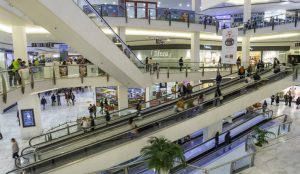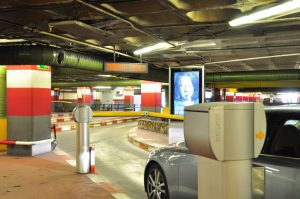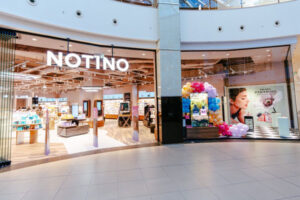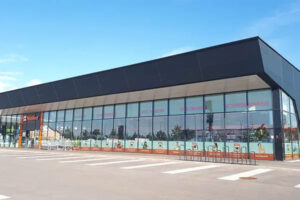By Jesús Hernández Esteban

“24 million visitors in 2014.” “12 million people visited the XX shopping center in 2015.” “17 million placed their trust in us last year.”
These are some of the headlines you can frequently read in real estate media. This data, together with the sales of the shopping center in question are the variables executives in our industry usually use. They remain important, but they mask a large portion of the truth.
For example: They do not tell us how many unique visitors we have (nor even allow us an estimate). Visitor and sales number are well-accepted indicators in the sector, but they hide a lot of information that a shopping center director must try to discover. The vectors configuring this information are more important than the data themselves. We may have a fever or be in good shape, but we do not know how we got to that point.
We all know that each shopping center is unique. With that as a starting point, each team must generate its own analysis of the information generated in its facility. This data should be carefully analyzed, weighing their importance in the result and, from that moment, verifying the evolutionary trend.
We understand that the number of visitors in August is different from April depending on the location of the shopping center. We can analyze our repeat visitors and their postal codes, investing in staff to ask for this information. We tap into our databases, sending information to our visitors, but we invest little money in enriching the databases and obtaining profiles based on the information we already have.
New metrics, new possibilities

The arrival of e-commerce has opened the window of possibilities allowed by online metrics, which are now slowly moving into the offline environment. Technology is also more readily available at more reasonable prices, with the sector incorporating measurement into everyday operations little by little. This means that we will soon have more complete control panels, with more information, that will allow for more logical decision making.
When I speak of the available new technologies, I can offer an example of some of the variables that we are using in La Vaguada and which are making it possible for us to offer better services to our owners and clients—tenants and operators in common areas. We can organize information based on the technologies used, although, in the end, this is something we as managers should already know.
Mobile technology
In the European Union, six out of every 10 citizens have a smartphone in their pockets. In Spain, the number is eight out of 10, with a somewhat higher figure in the United Kingdom. [1]
Taking this information into account, together with the fact that those of us who use this technology hardly ever separate ourselves from it, we at La Vaguada have decided to take advantage of it in various ways—starting with our WIFI system.
We carried out a software update that provides us with simple data about our customers’ behavior inside the shopping center. We already collect data like: frequency of visits, new visitors versus returning visitors, hot and cold zones, and dwell time. This information is very positively received by our clients in the common areas. They can better evaluate the effectiveness of their efforts with information about the visibility of their stand in La Vaguada. All of this is made possible with an investment of less than €6,000/year.
Once we saw the power of this data, we reached an agreement with the largest mobile operator in Spain and we set out to understand our customers better. Our system of picoantennas in La Vaguada provides much more information about them. Data such as whether they come from home, from work, or from another shopping center, their socio-economic status, our market share in our catchment area… all of this on our visitors and those at competing shopping centers.
Technology applied to the parking garage

The majority of visitors to most shopping centers arrive by car. The systems already installed provide very valuable information about them. Who doesn’t have a license plate reader on entrances and exits? The majority—especially those with pay parking—do. This security system can become an information system.
At La Vaguada, we transformed this information into data for the marketing department. We thus know that, of the 4.5 million vehicles visiting La Vaguada in 2016, 700,000 were unique vehicles, which implies that one in every five cars in the Community of Madrid visited La Vaguada sometime during the year—a penetration rate of 20%! Arriving at that figure required adding the people who walk in, which in our case is 60% of our visitors.
Other statistics we work with are: visit duration, visit frequency, and other data, such as that 16% of the cars that visit us do so to have lunch at our restaurants, which represents approximately one million people per year.
Point-of-sale terminals
The most recent project we are working on is to better qualify our visitors and know more about their behavior at La Vaguada through the point-of-sale (POS) terminals and card payments. Considering that more payments are now made with cards than cash in Spain (the figure for the EU as a whole stands at 47% [2]), using POS terminals in shops as a system for gathering information is very useful for shopping center managers.
The information we can obtain is includes our market share in the catchment area and the average purchase amount, information that is very interesting by itself, but, when analyzed for trends, can tell us about the shopping center’s evolution.
To some of our colleagues reading this, this will not seem very innovative. In truth, some of the information we are talking about is the norm in other countries like Portugal, because both retailers and owners have come to an agreement and they know that it is better for all of them to have the information available. In Portugal, most retailers have their terminals connected to the shopping center’s central systems, so that each transaction in each shop is registered in that system.
This allows centers to obtain such data as: average bill amounts, the ratio of purchasers to visitors in each of the shops, and, above all, the evolution of this data over time. If we add individual counters in each of the retail spaces to this data, we can obtain much more complete information.
Loyalty clubs & more
We can also obtain client data from our CRMs and loyalty clubs. La Vaguada has more than 100,000 registrations for its most loyal visitors. We have a lot of data about their behavior and, thanks to the latest technology, we will soon obtain clusters of behavior and be able to adapt our commercial offerings to their needs.
One of the latest tools we are starting to use is Google. Its simple Insights panel allows us to find the origin of the thousands Google users who have used Google Maps to request information about how to get to the shopping center.
Once we have the whole information system in place, we must interpret the data. Our objective is to know why things happen and we use “big data” techniques to find out. These allow us to find out why things happen: What influence does the competition’s commercial activity have? How does a rainy week affect us? It will take time to reach this point, however.
Now is the time to move from information to knowledge and from knowledge to action, managing all the information our shopping center generates and applying it to the business to improve the business. To do this, we only need enthusiasm, determination, and perhaps a bit of time and investment.
Legal Implications
When we started working on the first idea for the information system I explained in this article, one matter came up very quickly. This was, without a doubt, the legal implications that could arise about the use of this information.
Currently, and after sufficient legal analysis, the rule for Spain is that this information should be used with completely anonymised data, making it impossible to identify individual users. This allows both our visitors and us to be completely at ease with how we use this information.






